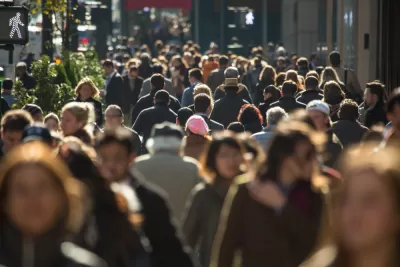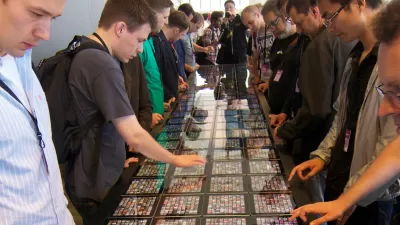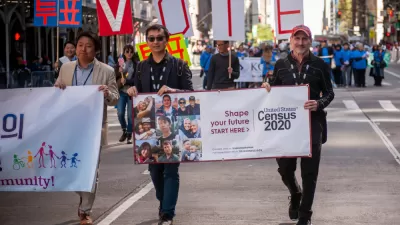Urban analytics has the potential to benefit both planners and the world. Here' are a few ways that new data-based approaches can open new levels of analysis and understanding.

Urban analytics and modeling can assist city planners with understanding the requirements and desires of residents, as well as trends that impact how people use and benefit from a city. Here are four urban analytics and modeling trends that are worth keeping an eye on in 2020.
This list does not capture every potential expectation for city modeling, infrastructure analytics and associated technologies. However, the four items covered are notable due to their potential to drastically change how developers proceed with future projects.
1. Using More Data Extracted From Participatory Design Efforts
Participatory design involves all stakeholders in a project and actively seeks public input during every phase of planning and development.
Applying participatory design to urban analytics means that city planners don't merely work with existing data sets. Instead, they continually ask people to give feedback about the process, thus creating new and up-to-date groups of information.
Eleanna Panagoulia recently published a peer-reviewed chapter called "Human-Centered Approaches in Urban Analytics and Placemaking," covering participatory design extensively.
One of the ideas explored by Panagoulia is whether participatory design enables problem solving. The alternative is to merely collect data from people who take part in planning processes, but Panagoulia believes participants can shape policymaking, brainstorm ideas, and more.
A 2019 report also detailed the options for working with mixed reality during participatory design. For example, instead of examining the city in its current state to imagine what's possible, residents can use mixed reality technology to see virtual, digital representations of proposed enhancements.
Participatory design is already showing its potential, and interest in the concept is growing as a result. Throughout 2020, planning professionals should strive to look at user feedback differently and see it as more than a data set. Doing so should lead to more satisfying results for all involved.
2. More Uses of Analytics Platforms and Modeling to Address Pollution Levels
Air pollution is certainly not a new problem, but people are becoming increasingly vocal to say they've had enough of its effects. Urban developers and related professionals will need to take that into account as they iron out their intentions.
Dr. Maria Neira, the World Health Organization's director for the Department of Public Health, Environmental and Social Determinants of Health, has previously urged city planners to consider health as a priority, and not to overlook the connection between air quality and health. In a 2018 opinion piece, Neira mentioned how more than 80% of cities around the world exceed air quality targets set by the World Health Organization.
At the end of 2019, campaigners from Extinction Rebellion, a radical climate action group, staged protests in Great Britain by targeting London and Manchester to raise awareness. The protestors blocked streets and caused law enforcement members to intervene while drawing attention to the fact that poor air quality can be fatal.
In the capital of Bosnia-Herzegovina, protestors gathered on January 20, 2020, to show opposition to the area's growing air quality problems. The attendees sought to raise awareness of what they assert is a decades-old matter.
Today, data analytics and models can help with air quality issues. In Dublin, Ireland, automatic air quality monitors collect data that eventually gets compiled into reports. Those documents show the concentrations of known pollutants, and how far the levels are from European Union targets.
Google also has an air pollution mapping tool that allows people to see air quality levels on a street-by-street basis. The company initially made the resource available to users in the United States but has since expanded availability to several European cities.
3. 3D Scanners and Modeling Tools
3D scanners and modeling tools can significantly assist city planners by capturing physical dimensions faster and more accurately, showing residents what to expect with upcoming projects. Various 3D scanners are available, including handheld models that boast a five-meter range and tripod-style scanners with up to a 1,000-foot range.
3D models are useful for planners and residents alike. From the planning perspective, these models make it easier to illustrate how all the pieces of a new project fit together and reduce the risk of unpleasant, costly surprises. They also help residents get excited about what's ahead.
In one example of city modeling, officials in Helsinki, Finland, generated a 3D model as part of a multi-year "smart city" initiative. The project created a model after taking surface and terrain data into account. One of the goals of the project is to facilitate data sharing across multiple parties, including local citizens and officials.
3D scanners and models will both continue to play an essential role in the city planning process. As officials use scanners to capture data, the resultant models keep everyone informed and able to access the details they need about projects.
4. An Emphasis on Public Transportation Models in City Planning
When city planners make news headlines, the coverage is not always favorable. Articles often focus on mistakes, without providing balanced perspectives to shed light on successes.
One area related to urban development that frequently receives complaints is public transportation. Riders gripe about buses being late or that existing routes are inadequate to their needs.
Prescriptive analytics models could solve that challenge. Prescriptive analytics models allow planning professionals to input data associated with identified problems, then let the analytics platforms suggest options for solving them. On the other side of the spectrum, predictive analytics help planners forecast how many people would likely use a new bus route or take advantage of an extended weekend service.
Planning officials already used public transportation-related modeling before 2020 arrived. However, during this year and the ones that follow, the technology should become more prominent.
Fascinating Changes on the Urban Analytics and Modeling Horizon
The trends covered here are significant for city planners due to the potential for professionals to gain insights that would have previously remained hidden. Moreover, the data sets may reveal patterns that help city planners make decisive conclusions and avoid wasting money or time.
The emerging uses of data and analytics will require city planners to show a willingness to learn and grow, plus complete aspects of their jobs differently. For example, if a professional has not used a 3D scanner before, understanding how to get the best results requires setting time aside for training.
If a city planner historically only gets a few residents' feedback at very specific times—such as during public information nights and city council meetings—participatory design may represent a drastically new way of interacting with people.
Being open to these analytics and model-based methods could help teams work more efficiently and achieve satisfying results, benefitting everyone involved.

Trump Administration Could Effectively End Housing Voucher Program
Federal officials are eyeing major cuts to the Section 8 program that helps millions of low-income households pay rent.

Planetizen Federal Action Tracker
A weekly monitor of how Trump’s orders and actions are impacting planners and planning in America.

Ken Jennings Launches Transit Web Series
The Jeopardy champ wants you to ride public transit.

Washington Legislature Passes Rent Increase Cap
A bill that caps rent increases at 7 percent plus inflation is headed to the governor’s desk.

From Planning to Action: How LA County Is Rethinking Climate Resilience
Chief Sustainability Officer Rita Kampalath outlines the County’s shift from planning to implementation in its climate resilience efforts, emphasizing cross-departmental coordination, updated recovery strategies, and the need for flexible funding.

New Mexico Aging Department Commits to Helping Seniors Age ‘In Place’ and ‘Autonomously’ in New Draft Plan
As New Mexico’s population of seniors continues to grow, the state’s aging department is proposing expanded initiatives to help seniors maintain their autonomy while also supporting family caregivers.
Urban Design for Planners 1: Software Tools
This six-course series explores essential urban design concepts using open source software and equips planners with the tools they need to participate fully in the urban design process.
Planning for Universal Design
Learn the tools for implementing Universal Design in planning regulations.
Heyer Gruel & Associates PA
Ada County Highway District
Institute for Housing and Urban Development Studies (IHS)
City of Grandview
Harvard GSD Executive Education
Toledo-Lucas County Plan Commissions
Salt Lake City
NYU Wagner Graduate School of Public Service






























